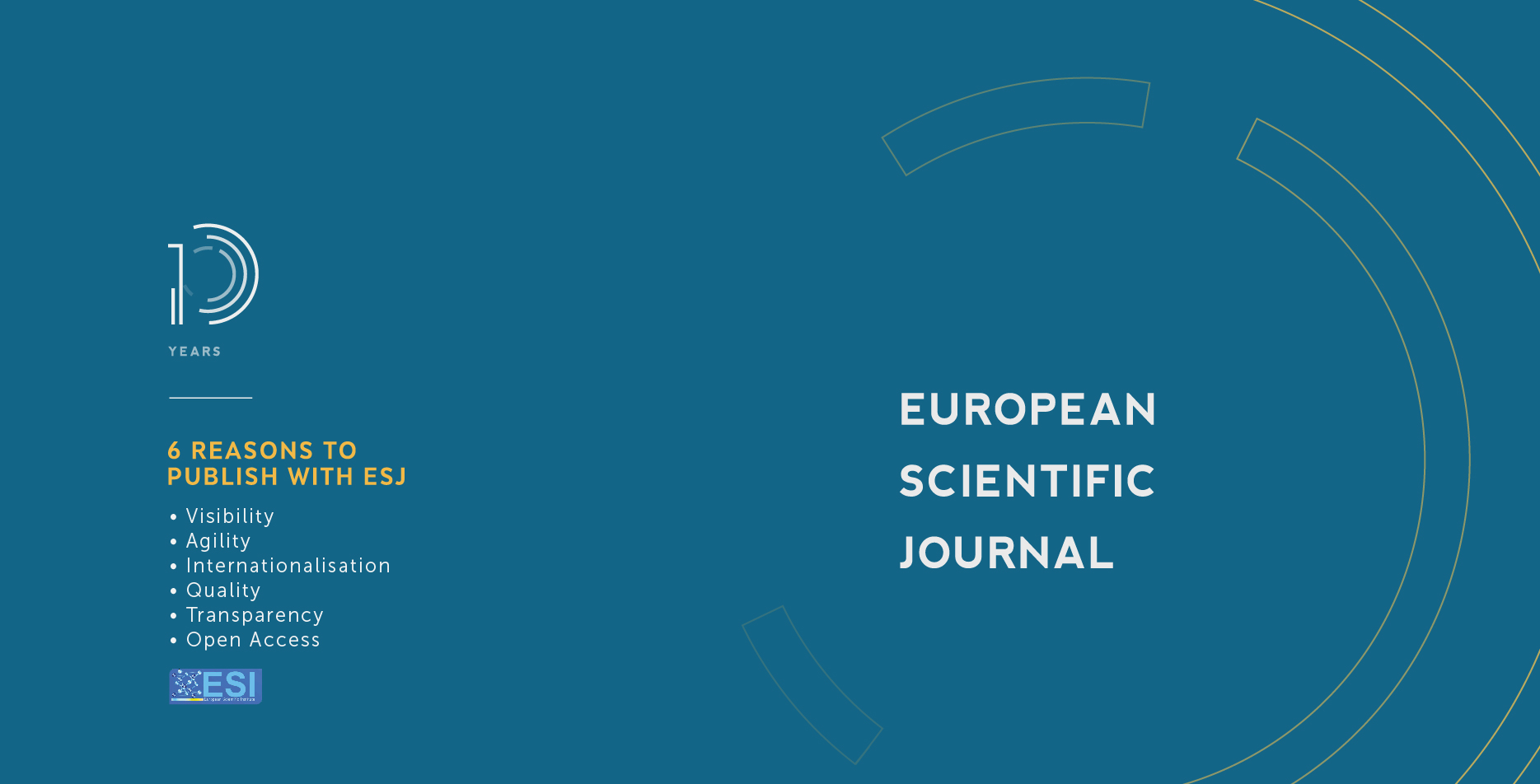Place De La Médecine Alternative Et Complémentaire Chez Les Patients Gonarthrosiques, À Propos De 105 Cas Au Congo Brazzaville
Abstract
Objective: To describe characteristics of complementary and alternative medicine (CAM) in patients with knee osteoarthritis. Materials and Methods: A cross-sectional, descriptive, and analytical study was carried out on patients with knee osteoarthritis. This was followed by Rheumatology consultation at the University Hospital of Brazzaville from 2017 to 2018 within a period of one (1) year. The diagnosis of knee osteoarthritis was made European Scientific Journal, ESJ ISSN: 1857-7881 (Print) e - ISSN 1857-7431 January 2021 edition Vol.17, No.3 www.eujournal.org 53 on the basis of ACR 1986 criteria. The elements of the CAM were obtained by questioning the patients. Results: Out of the one hundred and five cases, 101 were female (96.2%) and 4 were male (3.8%). The sex ratio was 0.03. The mean age was 56, 44 +/- 10, 29 years (range 30-80 years). Knee osteoarthritis was bilateral (86.7%), unilateral right (9.5%) and left (3.8%). 68 patients (64.8%) used CAM, 97.1% women and 2.9% men. 77.5% of patients used CAM during the diagnosis, 15.5% before diagnosis, and 7% after. The type of CAM are: massages of essential oils (72%), scarifications (61%), thermal cures (51.5%), phytotherapy (22%), cupitherapy (17.6 %), and acupuncture in 10.3% of cases. 58.2% of patients used CAM to relieve pain, 18.4% to cure, 15.3% to improve function, and 7.1% of cases to reduce the side effects of treatment. Conclusion: Our study reports a great diversity of CAM types used in knee osteoarthritis, which is dominated by essential oils in topical application.
Objectif : Rapporter les caractères de la médecine complémentaire et alternative (CAM) chez les patients gonarthrosiques. Matériels et Méthodes : Etude transversale, descriptive et analytique portant sur les patients présentant une gonarthrose et suivis en consultation de Rhumatologie au CHU de Brazzaville de 2017 à 2018, soit 1 an. Le diagnostic de gonarthrose était retenu sur la base des critères ACR 1986. Les éléments de la CAM ont été obtenus par l’interrogatoire des patients. Résultats : Nous avons inclus cent cinq cas, dont 101 de sexe féminin (96,2%) et 4 cas de sexe masculin (3,8%). Le sexe ratio était de 0,03. L’âge moyen était de 56 ,44+/-10 ,29 ans (extrêmes European Scientific Journal, ESJ ISSN: 1857-7881 (Print) e - ISSN 1857-7431 January 2021 edition Vol.17, No.3 www.eujournal.org 52 30-80 ans). Le siège de la gonarthrose était bilatéral (86,7%), unilatéral droit (9,5%) et gauche (3,8%).68 patients (64,8%) ont fait recours à la CAM dont 97,1% des femmes et 2,9% d’hommes. 77,5% des patients ont utilisé la CAM au cours de l’annonce du diagnostic, 15,5% avant le diagnostic et 7% après. Le type de la CAM était : les massages d’huiles essentielles (72%) des cas, les scarifications (61%), les cures thermales (51,5%), la phytothérapie (22%), la cupitherapie (17,6%) et l’acupuncture dans 10,3% des cas. 58,2% des patients utilisaient la CAM pour soulager la douleur, 18,4% pour guérir,15,3% pour améliorer la fonction et 7,1% des cas pour atténuer les effets secondaires des traitements. Conclusion : Notre étude rapporte la grande diversité des types de CAM utilisés dans la gonarthrose, dominés par les huiles essentielles en application topique.
Downloads
Metrics
PlumX Statistics
Copyright (c) 2021 Angalla Affleck Romaric Ledier, Lamini Norbert , Ntsiba Honoré, Akoli Ekoya, Nkouala Kidédé Chabel, Omboumahou Bakale Francina, Salémo Anah Précieu

This work is licensed under a Creative Commons Attribution-NonCommercial-NoDerivatives 4.0 International License.








